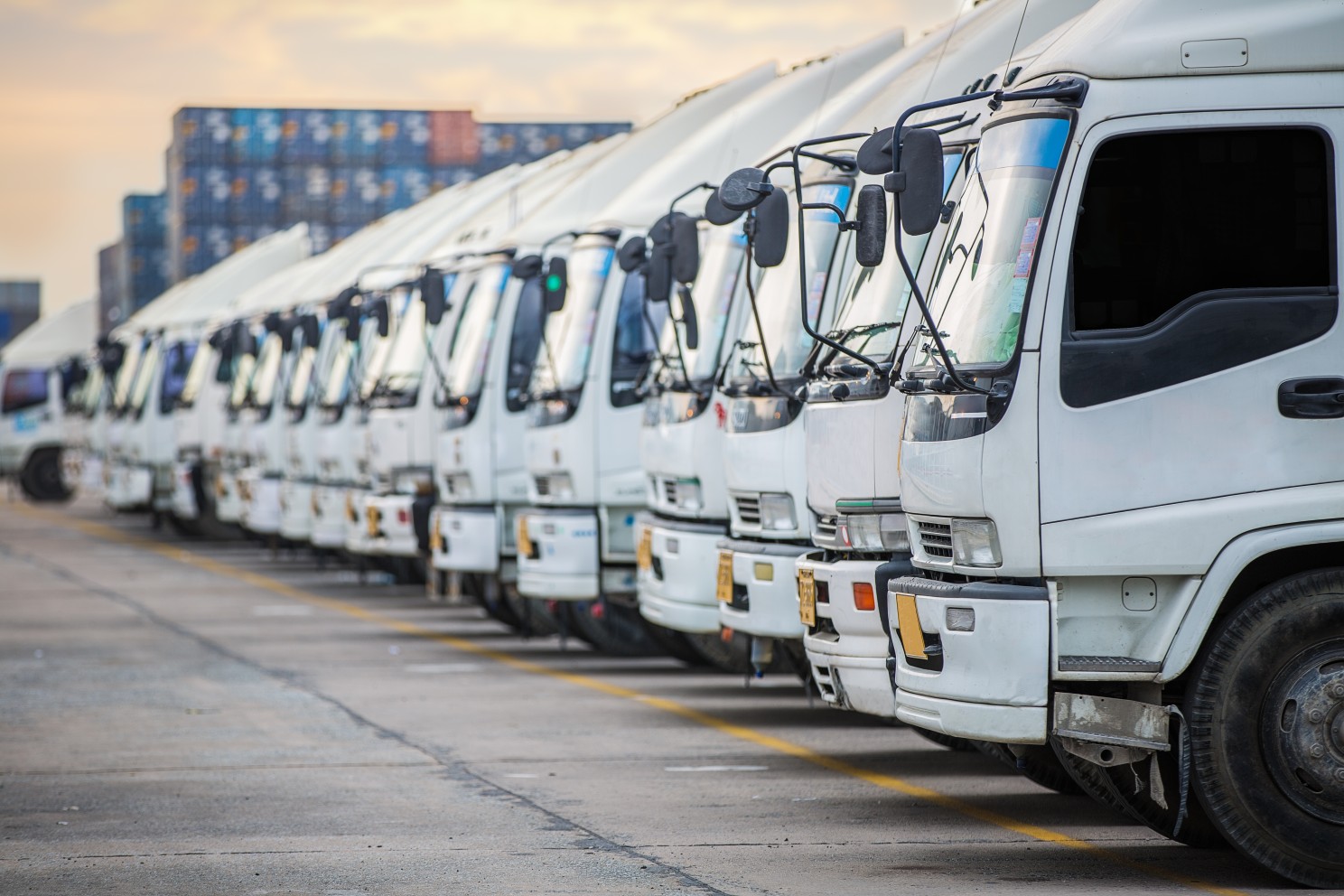
Susie Jones
Lkw-Fahrer stellen den Begriff "Fahrermangel" in Frage
Erstellt: 15.08.2024
•
Aktualisiert: 18.12.2024
Am 11. April 2024 eröffnete das [DfT] (https://www.fleetpoint.org/fleet-management-2/driver-shortage/consultation-opened-of-how-to-address-the-driver-shortage-for-hgv-and-coach/) eine Konsultation über Maßnahmen zur Behebung des Fahrermangels. Sie suchen nach Vorschlägen, die es einer Person ermöglichen, ihre Theorie- und Geländeprüfungen abzulegen, bevor ihr eine vorläufige Lkw-Fahrerlaubnis erteilt wird.
Seit Covid-19 und dem Brexit hat die Branche einen Rückgang der Lkw-Fahrer zu verzeichnen. Durch die Pandemie verzögerten sich 30.000 Tests für neue Fahrer, und der Brexit traf Flottenunternehmen hart - viele europäische Lkw-Fahrer verließen das Vereinigte Königreich.
Einem Bericht von SNAP aus dem Jahr 2023 zufolge könnte der Sektor in den nächsten 10-15 Jahren einen "Wendepunkt" (https://snapacc.com/tipping-point/) erreichen. Da sich die Branche schnell wandelt, gehören Online-Bestellungen zu den am schnellsten wachsenden Anforderungen - in Verbindung mit einer alternden Erwerbsbevölkerung wird der Bedarf der Branche den Mangel an qualifizierten Fahrern übersteigen.
Was denken Lkw-Fahrer?
Auf [soziale Medien] (https://www.facebook.com/snapaccount?locale=en_GB) forderte SNAP die Fahrer auf, ihre Meinung zu dem Vorschlag des DfT zu äußern. Viele Fahrer äußerten sich nicht zu der Regelung, aber 72,5 % stellten den Begriff "Fahrermangel" in Frage und bezeichneten ihn als Panikmache.
Stattdessen gaben sie an, dass die folgenden Gründe erfahrene Fahrer dazu veranlassten, die Branche zu verlassen, und in Verbindung damit auch neue Bewerber abschreckten:
Löhne
Von den 72,5 % gaben 28 % an, dass die niedrige Bezahlung sie abschreckt. Die Fahrer auf den Social-Media-Seiten von SNAP gaben an, dass sie in anderen Berufen mehr verdienen könnten:
Ich habe einen Lkw-Führerschein, aber keine Lust, ihn zu benutzen. Als Fahrlehrer verdiene ich derzeit mehr pro Stunde. Es ist überhaupt kein Fahrermangel. "
"Zahlen Sie den Fahrern mehr Geld und geben Sie ihnen bessere Einrichtungen. "
Es gibt falsche Vorstellungen über die Löhne von LKW-Fahrern im Vereinigten Königreich - es herrscht die Meinung vor, dass LKW-Fahrer mehr verdienen als der durchschnittliche Arbeitnehmer. Laut [National Careers] (https://nationalcareers.service.gov.uk/job-profiles/large-goods-vehicle-driver) liegt das Durchschnittsgehalt eines Lkw-Fahrers im Vereinigten Königreich zwischen £22.000 und £40.000 - wobei erfahrene Fahrer am oberen Ende verdienen.

Einrichtungen
Auch die Einrichtungen wurden von vielen in Frage gestellt - 20 % machten schlechte Standards dafür verantwortlich, dass qualifizierte Fahrer abgeworben werden. Der Standard der Einrichtungen auf den Truckstops im Vereinigten Königreich wurde von den Branchenvertretern stark kritisiert, und viele meinten, sie seien ihr Geld nicht wert.
Das DfT hat mit seinem 6 Millionen Pfund umfassenden [HGV Parking and Driver Welfare grant scheme] (https://www.smmt.co.uk/2024/05/first-class-facilities-truckstops-to-be-upgraded-with-16-5m-funding/#:~:text=Under%20the%20plans%2C%2038%20truckstops,significantly%20upgrade%20facilities%20for%20drivers.) eine wichtige Maßnahme ergriffen. - unterstützt durch weitere 10,5 Millionen Pfund von der Industrie. Das Programm sieht Investitionen in 38 Lkw-Haltestellen in ganz England vor, um die Einrichtungen für die Fahrer zu verbessern, einschließlich neuer Duschen und Restaurants sowie besserer Sicherheit.
Zusätzlich zu den verbesserten Einrichtungen werden im Rahmen des Vorhabens hoffentlich rund 430 neue Lkw-Parkplätze geschaffen, so dass es weniger Parkplätze gibt und die Stellplätze am frühen Abend voll sind.
Mangel an Arbeit
Ebenfalls 20 % der Fahrer erklärten, sie hätten zwar einen Führerschein, könnten aber keine Arbeit finden. Nach Angaben des [Office for National Statistics (ONS)] (https://backlinelogistics.co.uk/the-9-best-and-worst-locations-to-be-an-hgv-driver/) gibt es im Vereinigten Königreich mehr als 183.000 Arbeitsplätze für Lkw-Fahrer. Trotzdem gibt es in jeder Region unterschiedliche Beschäftigungsmöglichkeiten, was zu einer ungleichen Nachfrage im gesamten Vereinigten Königreich führt. Mehrere Fahrer berichteten über ihre Erfahrungen bei der Suche nach einem Arbeitsplatz:
"Ich habe seit sieben Monaten einen Abschluss der Klasse eins und finde keine Stelle. Ich würde gerne wissen, wo der Mangel herrscht. "
"Welcher Mangel? Es ist nicht viel Arbeit zu vergeben. "
Zertifikat über die berufliche Eignung von Fahrern
10 %, die dem Begriff "Fahrermangel" weder zustimmten noch ihn ablehnten, gaben an, dass der [Befähigungsnachweis für Berufskraftfahrer (CPC)] (https://www.gov.uk/driver-cpc-training/getting-your-driver-cpc-card) eine entscheidende Rolle beim Rückgang der Zahl der Lkw-Fahrer gespielt habe.
Der 2009 eingeführte Befähigungsnachweis soll die Sicherheit im Straßenverkehr, die Professionalität und das Umweltbewusstsein verbessern und sicherstellen, dass die Fahrer über alle Gesundheits-, Sicherheits- und gesetzlichen Anforderungen auf dem Laufenden sind. Die Ergebnisse einer Konsultation zur Überarbeitung des CPC ergaben, dass [47 %] (https://www.hgvtraining.co.uk/hgv-training/what-is-cpc/#:~:text=It%20was%20brought%20in%20to,1000%20for%20driving%20without%20it) der Lkw-Fahrer den CPC für ineffektiv oder sehr ineffektiv hielten. In den sozialen Medien von SNAP äußerte sich ein Fahrer:
*"Schafft den CPC ab, und ich werde Schichten übernehmen. Ich bezahle nicht dafür, 35 Stunden zu arbeiten und zu lernen, was ich vorher jahrelang jeden Tag getan habe.
Die Regierung hat eine Reihe von Änderungen am CPC angekündigt, um die Flexibilität bei der Erneuerung und Wiedererlangung der Qualifikation zu erhöhen. Neben Änderungen an der Kurslänge wird die Regierung zusammen mit der Driver and Vehicle Standards Agency mehr zentrale Kursinhalte entwickeln.
Externe Faktoren wie der Brexit und COVID-19 in Verbindung mit branchenbezogenen Themen haben sich erheblich auf die Beschäftigungsquoten im Speditionssektor ausgewirkt. In einem sich ständig verändernden Umfeld muss die Branche weiterhin Änderungen vornehmen, um mehr Fahrer zu gewinnen und zu halten.
Über SNAP
SNAP ist der digitale Marktplatz, der Flottenfahrten vom Depot bis zum Zielort in ganz Europa durch Technologie, Sicherheit und ein ausgedehntes europäisches Netzwerk verbindet.
Der Dienst wird alle 13 Sekunden von einem der über 190.000 Lkw-Fahrer genutzt, die das Zahlungssystem von SNAP verwenden. Die Transaktionen werden über ein Netzwerk von über 600 LKW-Servicepartnern in ganz Europa abgewickelt. Kostenlos anmelden



